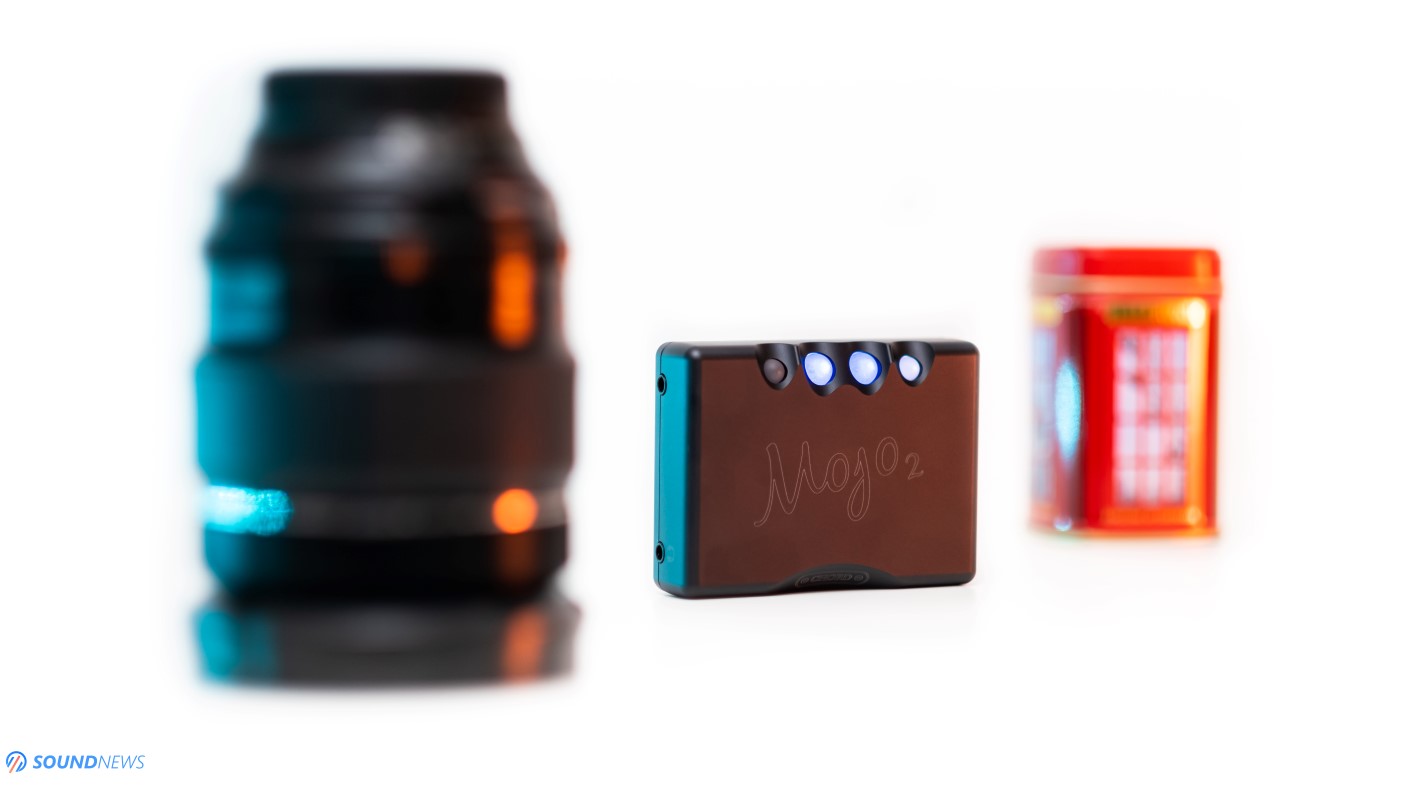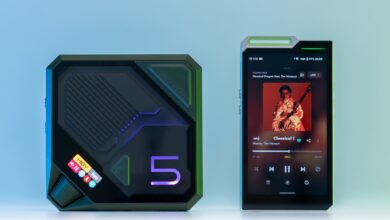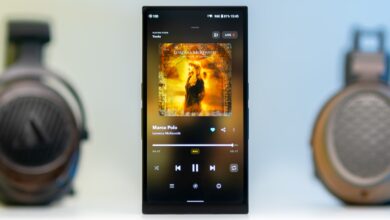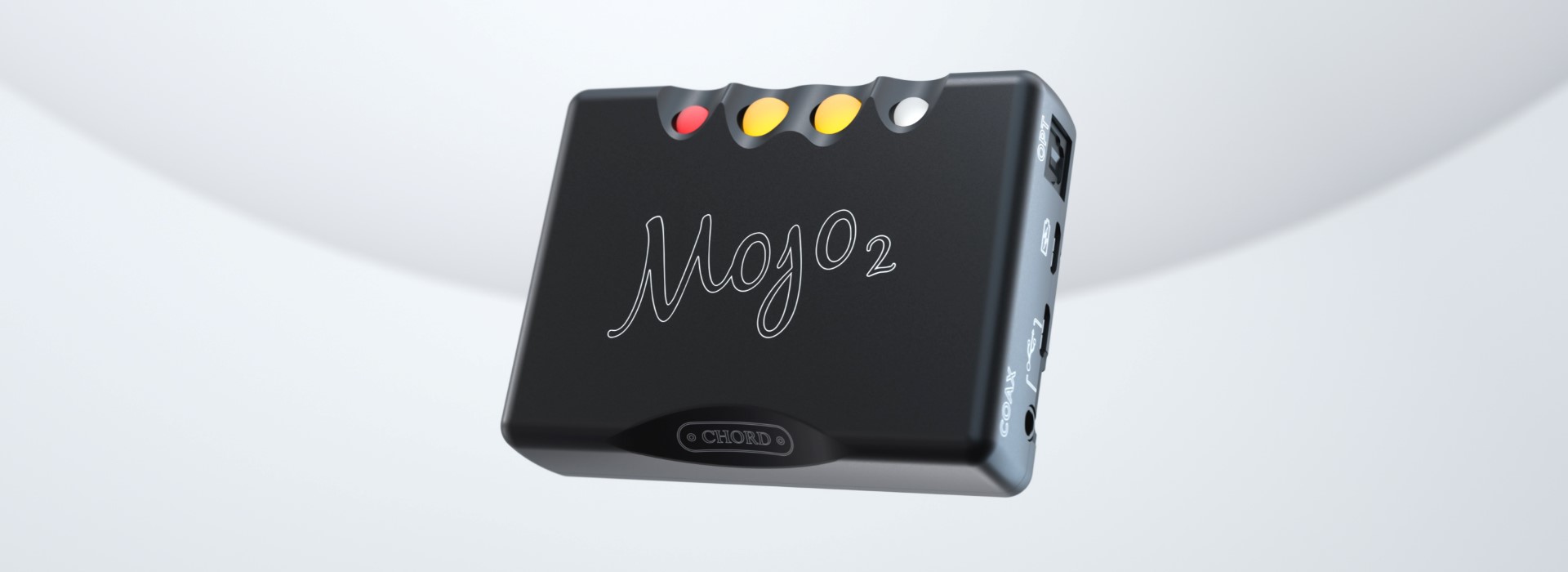
My Video Review:
I am a curious person by nature, especially for all things audio and when an audio component would land on my table, even before listening I would pop its hood, follow the signal path from input to output, so I could better understand what makes it different. I would always seek design mistakes or limitations put in place by the cost, technology, development time or by all of the above. After carefully inspecting hundreds of units, I could find rushing, maybe stolen ideas and rarely a beautiful layout that might look like a beautiful painting to me.
There were some interesting digital converters around here that made me research more, shoot back and forth multiple emails and listen to a lot of music in the process. Sadly, most of them are looking similar on the inside, especially the ones coming from Asia, choosing off the shelf DAC chips, digital receivers and op-amp based output stages that are boring me quicker than political debates on TV. When a modern unit hops on my lap, with a different thinking behind it, my curiosity plunges higher and that seems to be the case with the unit that I will be testing today.
You all know by now that there are plenty of digital to analog conversion techniques like Oversampling DACs or interpolating DACs, such as those having Delta-Sigma modulators, Binary weighted DACs (like the R-2R ones), there are even Hybrid DACs using a combination of the two. But there is a new breed of DACs, that recently took the world by the storm and those are FPGA DACs that don’t use DAC chips at all, nor a ladder of resistors, just a programmable silicon with custom code that tells it to decode zeroes and ones into toe taps, head-bangs and butterflies in our stomachs. There are plenty of such digital creatures from the likes of PS Audio, Audiobyte, Tube Technology, Exogal, Meitner, Playback Designs, dCS, Nagra and many others, but there’s one brand that stands out from the crowd and that my friends is Chord Electronics.
We have a long history of reviewing Chord Electronics stuff and our first experience was trying out their top dog QBD76 HDSD DAC almost a decade ago. It quickly became a standard to which all DACs should compare and when our Sennheiser HE-1 (Orpheus 2) review dropped, you can you already guess which unit was used at the front end, that’s right! It was the QBD76 HDSD that introduced us the beautiful land of FPGA DACs…or software defined DACs as I like to call them.
Fast forward to Christmas 2021, a small box from UK appeared at my front door with a big warning sticker on it. I was informed that their newest and smallest DAC/Headamp combo would release on January 31st and that made me happy, as a world-first review for their next generation Mojo 2 would come from none other than the DACMan himself.
When the original Mojo was introduced to the world, it revolutionized the portable DAC/Amp market as it was inconceivable that a palm sized unit could dethrone huge desktop DACs literally and figuratively. I was impressed by its performance, but let down by its weak EMI and RFI shielding when connected to a modern smartphone. I had an unpleasant experience when I left it in the drawer for a few months and I couldn’t charge it back. As you can see, there were plenty of things to improve with a next gen device. While it looks more or less the same, I’m curious if their past mistakes were being taken care of and if it performs any better with mobile sources. Chord Electronics marginally increased its price point for their do-it-all thingy that skips additional boxes and unnecessary cables for the minimalist 21century audiophile. As usual, I’ll be approaching it as a critic, but also as a music lover, commenting on everything I find interesting to share with you.
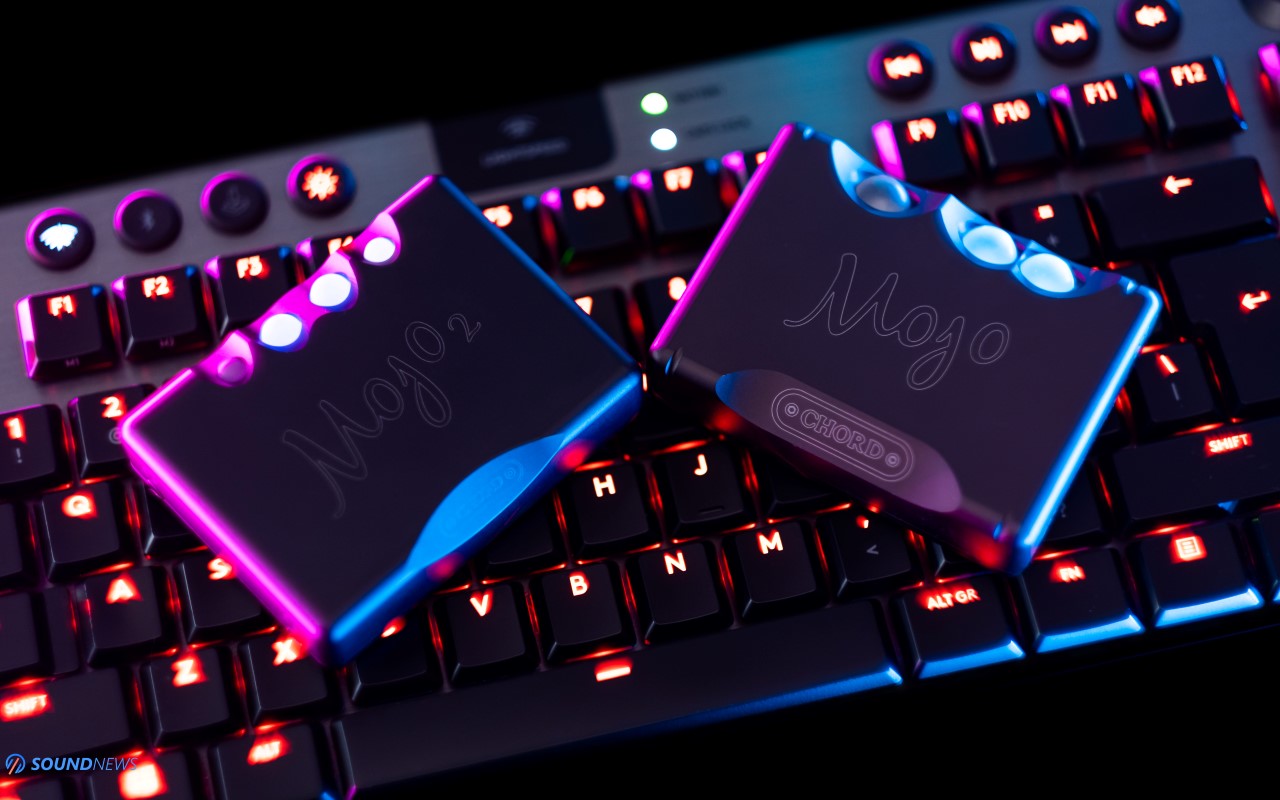
Unboxing
I wasn’t surprised seeing a minuscule product box, but it came double-boxed and well protected, so you can be sure that it will arrive safe and sound to your front door. Its packaging is thick, its basic specs are already printed on it, including its serial number. Inside the product box there is plenty of white foam that surrounds the unit as an extra protection measure. As it was the case with the first gen Mojo, there’s some paperwork as a Quick Start Guide and Safety Instructions, plus a USB type A to Micro-USB cable that can be used for charging or for connecting it to your PC or MAC. That’s right folks, the usual Micro-USB ports are still present on the newest Mojo, but there’s an additional USB Type-C input, for which you’ll need to use your own cable. The only thing that is missing is a detailed user-manual that will help you unlock all its features, digital filters and EQ presets. As with all their converters, there are some hidden menus that you be accessed by a combination of buttons l, so I am recommending downloading its user manual from here.
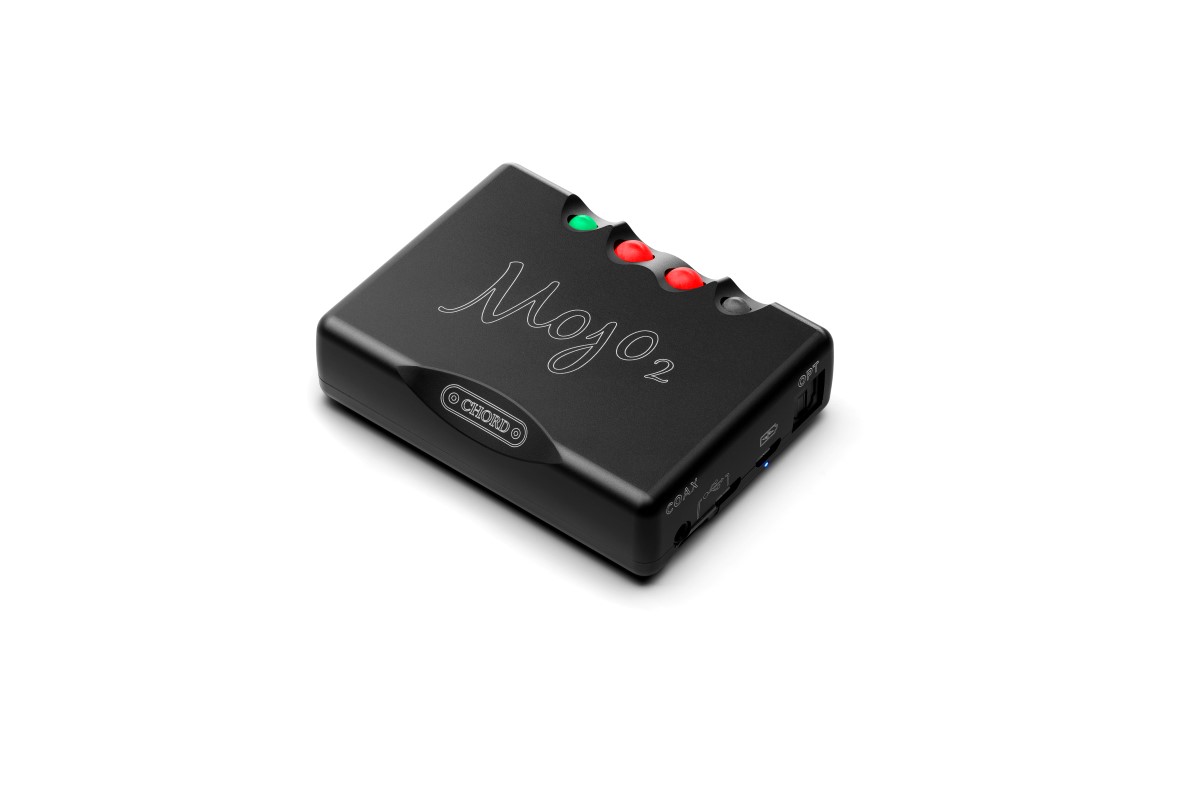
Design & Build Quality
The cute little Mojo2 follows the same design language of its precursor, using a similar case design, weight and build quality, which is a great thing in my book.
It’s the same good old Mojo machined from a single block of aircraft grade aluminum, coming in an attractive matte-black finish. It is only by a millimeter longer and by two wide, but when stacking them together, I can’t spot a size difference. Its tiny case feels solid in the hand and instead of three buttons, we got four buttons now – an additional one for its user menu. Its glowing ball lights are changing hues depending on the music format, sample rate and volume level as it goes up or down. As it was the case with the first gen Mojo, it was designed to work equally well with computers and mobile sources and it can handle the highest sample rates as 32-bit 768 kHz and even DSD 256 (4x) content.
Its footprint is tiny, it’s much smaller than my palm, so you can easily integrate it anywhere, you can even carry it to your office and back home, since it weights little no nothing. Its silicone feet are sitting in small cutouts, they won’t move an inch while I’m re-arranging it on the table. I’m quite annoyed when silicone feet are leaving a trail of glue on my table, but that won’t be the case here. Hiding all the screws underneath is a norm, making it look classy and handsome at the same time.
It’s exceptionally well built and I like that its buttons are smaller and so are their metallic cutouts and when squeezed tightly in a pocket you won’t accidentally turn the volume up or down. Surprisingly, its rounded buttons are no longer rolling – a small but welcome change. Once turned on, its buttons will start shining rainbow lights left and right, luckily you can lower its brightness by pressing its menu once and then the “-“ button. On its lowest brightness setting, there is very little light pollution in complete darkness and that didn’t bother me in late night listening sessions. There isn’t more to say about it, so let’s move on to its I/O.
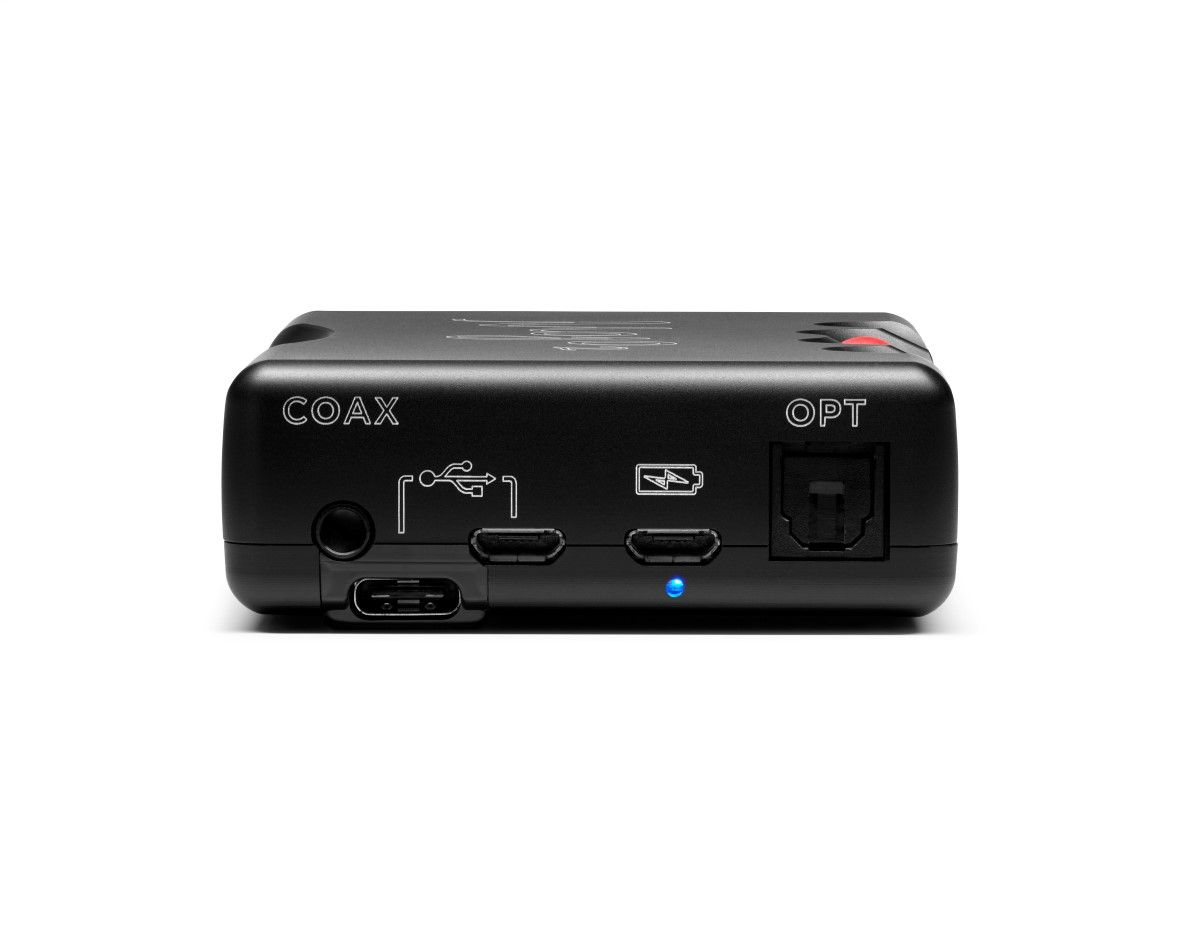
Layout, Inputs & Outputs
It may be small and cute, but it’s fully packed with inputs and outputs. There’s finally a USB Type-C input that should work well with computers and smart devices, a Micro-USB input used for the same purpose and another one that will be charging the unit. Its coaxial input is still in place and if you’re crazy enough, you can use it with their Hugo MScaller for a better overall performance. An optical input seals the deal that worked great with a TV and gaming console.
Since its designers aren’t huge fans of balanced power, two single ended 3.5mm (1/8”) headphone jacks can still be spotted and that’s basically it. Last but not least, all its ports are sitting exactly in the same spot with their first gen Mojo and if you already own its matching streamer Poly, then get funky as it works as intended with the newest device.
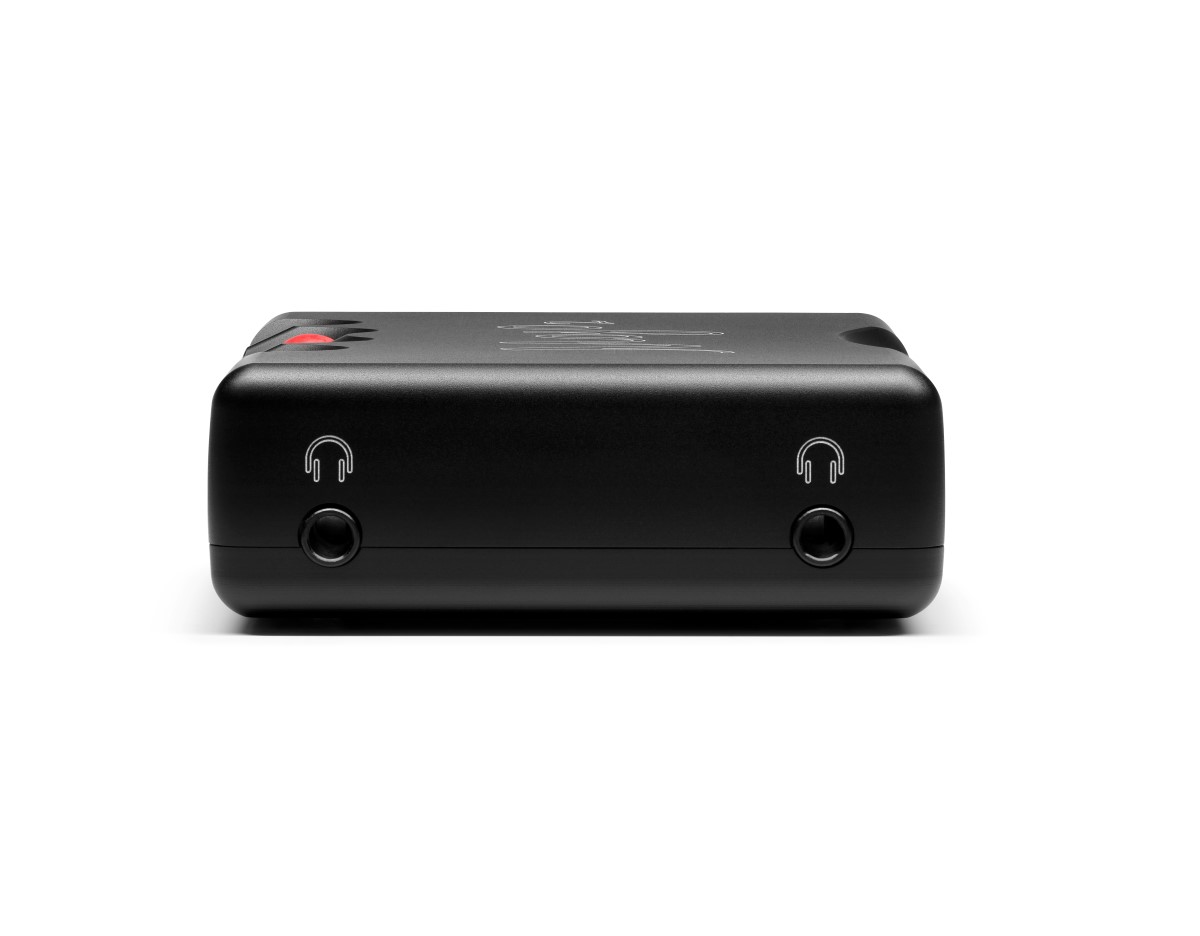
Battery
Mojo2 sports an 8-hour battery life, although in my case ~7 hours was a more accurate number, as I was drivingly mostly desktop planar-magnetic headphones. Its battery life depends on which headphones you’re driving and if you’re an IEM guy, then 8 hours could be doable. There’s a small LED next to the charging port and its color will be suggesting its battery status as follows:
- Blue: 75% – 100%
- Green: 40% – 75%
- Yellow: 10% – 40%
- Red: 2% – 10%
- Blinking red: 0% – 2%
If Mojo 2 is left constantly on charge, it will enter Intelligent Desktop Mode to protect the battery from overcharging. This will be indicated by a purple battery status light – pretty cool if you ask me.
A welcome addition to Mojo2 features list is…drum roll…fast charging! When it’s switched off and charging, the menu button will display a specific color to indicate charging current – a useful indicator of the charger quality and/or battery health. For example, a white menu button indicates that it’s charging at maximum capacity. Green indicates a slow charging that can be improved with a different adapter and Red color signifies insufficient charging current.
While having a slightly bigger battery capacity, Mojo2 offers a similar operating duration to its predecessor, but before sharpening your pitchforks and raising your torches, you should understand that a higher processing power left a bad mark on its battery life and in the end we’re getting a better sound performance at the same battery life.
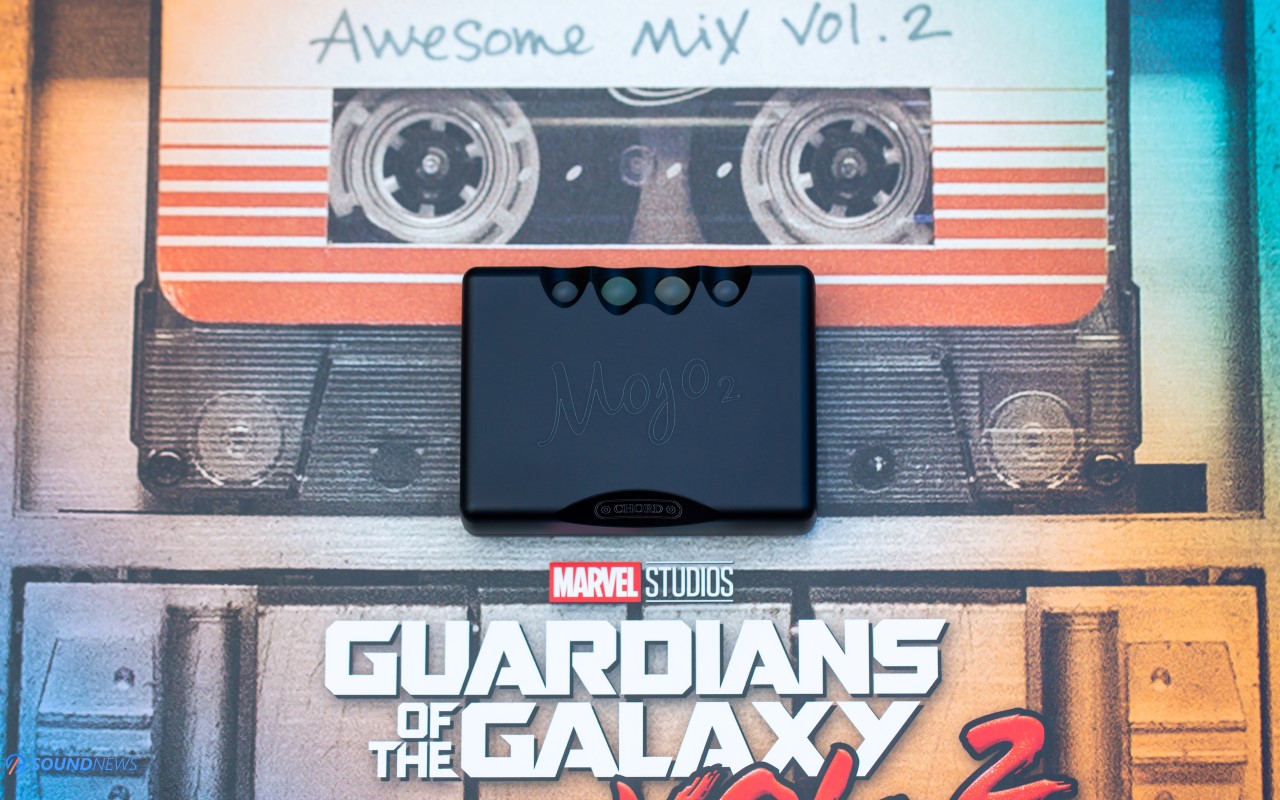
Advanced Features
Yep, that’s right! Features and this is where Mojo2 shines way brighter to its predecessor, as besides an improved audio performance, there is so much more.
A. Tone Controls
Mojo2 offers comprehensive equalization adjustments to suit a wider range of IEMs and headphones. There are four main equalization modes: sub-bass, mid-bass, lower-treble and upper-treble. For each of these modes there are nine positive (lift) and nine negative (cut) 1dB steps available.
To access these modes, you’ll need to press the menu twice until the button displays a red color – indicating the first of the four equalization options – the sub-bass adjustment. From here, further menu presses cycle through the remaining three modes: yellow: mid-bass; green: lower treble; blue: upper treble.
Here’s a simple graph that demonstrates how the DSP lift and cut affects the frequency response.
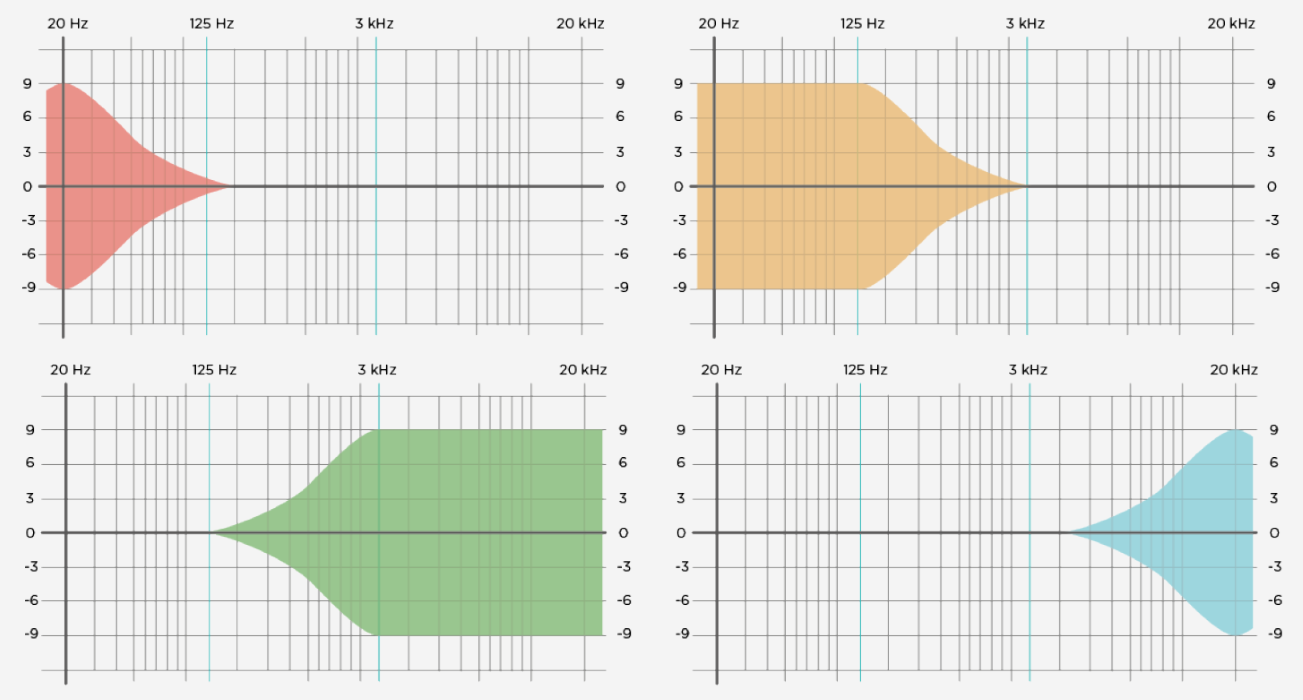
B. Crossfeed
Mojo 2 offers three levels of crossfeed to improve spatial effects for a more speaker-like soundstage when using headphones. Press menu once (menu button will show blue), then press the volume up ‘+’ button to cycle between the four available options: red: minimum; green: moderate; blue: maximum; unlit (crossfeed Off). Once chosen, the selection will be remembered and Mojo 2 will automatically exit the menu setting in approximately 10 seconds. Alternatively, press and hold menu to exit the menu immediately.

Under Mojo’s Hood
Most important part of the little Mojo2 is its DAC section, which I consider quite special from multiple points of view. It doesn’t use an off-the shelf DAC chip that you can find in every corner of Hi-Fi, it doesn’t use a ladder of R-2R resistors, instead a Xilinx Artix-7 FPGA (Field Programmable Gate Array) silicone that was programed to do all the heavy lifting. This is very much a software defined DAC, meaning that with future firmware updates you can actually change its sound signature and even improve some of its specs on the hardware level. Mojo2 builds upon the success of Mojo with improved WTA filter to better reconstruct the timing of the transients – giving better pitch and timbre perception. Its WTA filter uses 40.960 taps and 40 DSP cores running at full rate. Its 4e Pulse Array DAC was also improved for a lower distortion and lower out of band noise.
Chord Electronics crafts their own FPGA DACs for quite some time now, but Mojo2’s lossless DPS for advanced tone controls without any degradation in sound quality is a World First. Its ‘UHD DSP’ gives Mojo2 a wide compatibility with today’s headphones, plus lots of flexibility with partnering equipment.
There aren’t coupling capacitors in its signal path that should deliver a more neutral tonal balance. Last but not least, it seems that its LPF and amplifier stages are built around discrete components using tens of diodes and transistors (bi-polar?). You can find fully discrete stages in the world’s best DACs and headphone amplifiers of today and that makes happy knowing that it wasn’t compromised in any way.
Mojo2 will be delivering 600mW in 30 Ohms and 90mW in 300 Ohms on both its headphone jacks, suggesting that its power output is similar to its predecessor. Its 0.06 Ohm output impedance is almost unmeasurable, guaranteeing an instant power delivery on the spot, without degrading amplifier’s damping factor.
If you are dying to know more about Mojo2 and everything that makes it tick, then I strongly recommend checking Rob Watts’ Technical Seminar that explains down to the smallest details all the changes and improvements that were made with it.
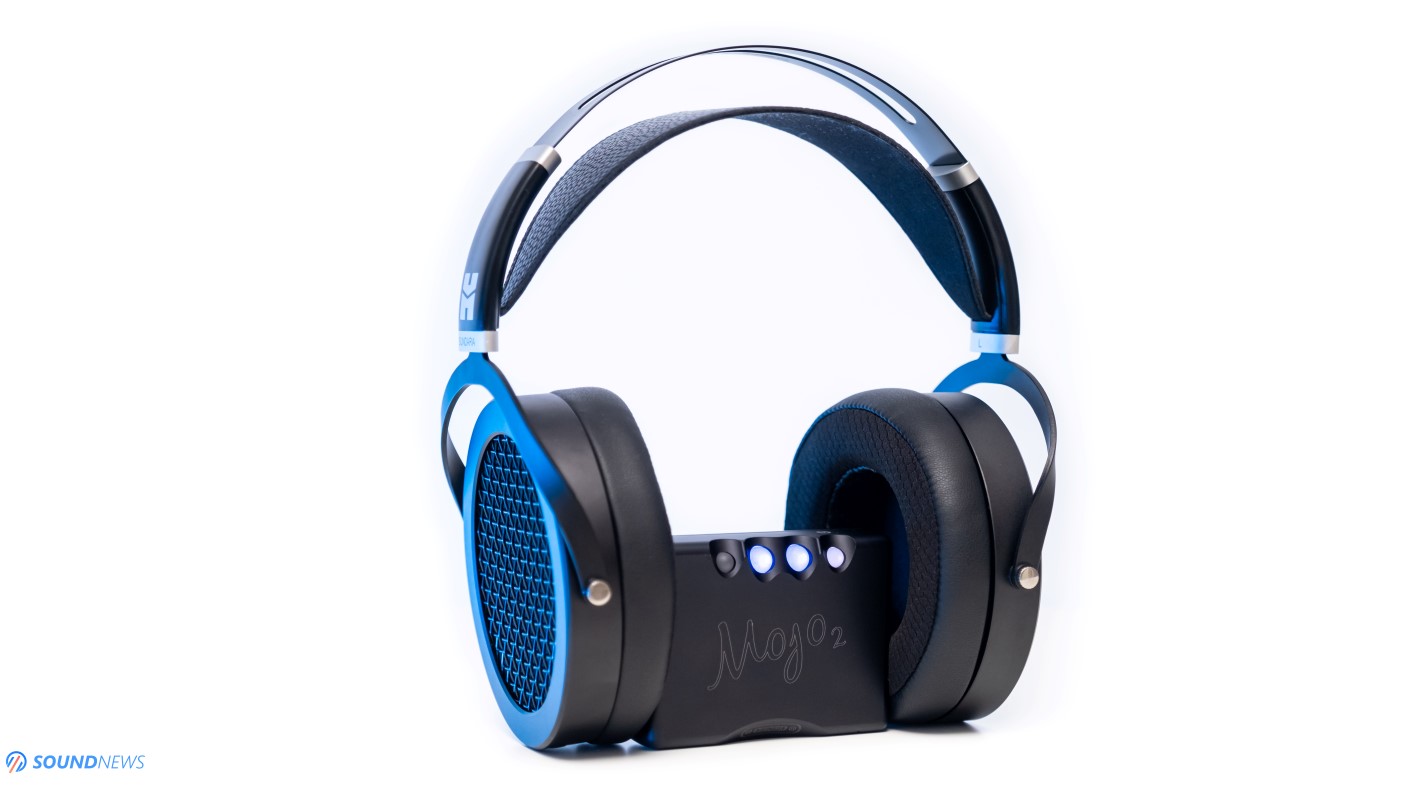
Sound Performance
I. Preliminary Sound Impressions
After engaging my usual playlist, a minute didn’t pass and the tiny Mojo2 was already showing me its glowing personality. It goes with the same Chord house sound that never limps dynamics, on the contrary adds an additional leg or two, so that it can keep up with speedy dynamics. The key words with Mojo2 are undoubtedly: Excellent rhythm, pace & timing, explosive dynamics, an instant start and stop of the drivers and of course a detailed presentation that never tries to be clinical sounding. Mojo2 walks the same path paved by its predecessor, but luckily, I’m not getting RFI and EMI wireless interference when connected to a phone and taking a call. Finally, there is an intelligent battery protection mode and finally there aren’t noises whatsoever no matter where I’m placing it in the house.
Describing the Mojo2 is not an easy task, because it can certainly get powerful and aggressive down low, you can push that midrange closer and make it forgivable with older recordings or you can add a sprinkle or treble presence and make it shinier and more defined up top. You can heavily customize it and make it your own and that is probably the biggest improvement I’m seeing versus its forerunner. For this reason alone, I decided testing it in its stock form.
You know what’s funny? After listening to chip-based converters for months and then switching back to Mojo2…it feels like it knows exactly what music I’m going to play, it anticipates the next musical notes and prepares in advance, delivering in instant rise of dynamics, start and stop of the drivers, like there’s no acceleration at all. Music just happens instantaneously and I’ve become addicted to this effect, especially with fast and impactful tunes I cannot get enough of it.
While the first gen Mojo didn’t feel powerless with portable headphones, IEMs and several desktop headphones, Mojo2 feels a little grippier with harder to drive headphones. Chord Electronics have done their mumbo-jumbo providing power ratings in 30 and 300 Ohms and for the first gen Mojo those were given at 8 and 600 Ohms respectively. Nice tricks, but that’s not a biggie as we can still use power calculators. In the end, Mojo2 seems to provide a similar power output, meaning that some desktop headphones should work just fine with it. I’ve grabbed a few pairs of planars magnetics and commenced a long comparison between the two and there is definitely a similar headroom with difficult loads as Audeze LCD-4 and Hifiman Arya Stealth and while the sound started clipping and breaking up with the LCD-4, easier tasks as Kennerton Rognir and Hifiman Sundara worked impressively well. Dynamics were great, bass notes felt present and powerful and it was not losing its grip.
Lastly, on very rare occasions first gen Mojo can sound a little brighter on top, especially with treble intensive music, but when Chocolate Chip Trip by Tool (Qobuz / Tidal) started playing on Mojo2, I’ve heard them loud and clear, snare drums hits were landing precisely and mercifully on the eardrums, yet I wasn’t closing my eyes or lowering the volume output. Mojo2 felt calmer somehow, yet more precise and defined in the same time. This is quite weird, as when I’m getting a cleaner overall presentation, I’m expecting a hotter treble, but that isn’t the case with their smallest digital creature. Kudos Chord Electronics for making it more natural sounding in top octave, yet clearer and more defined everywhere else.
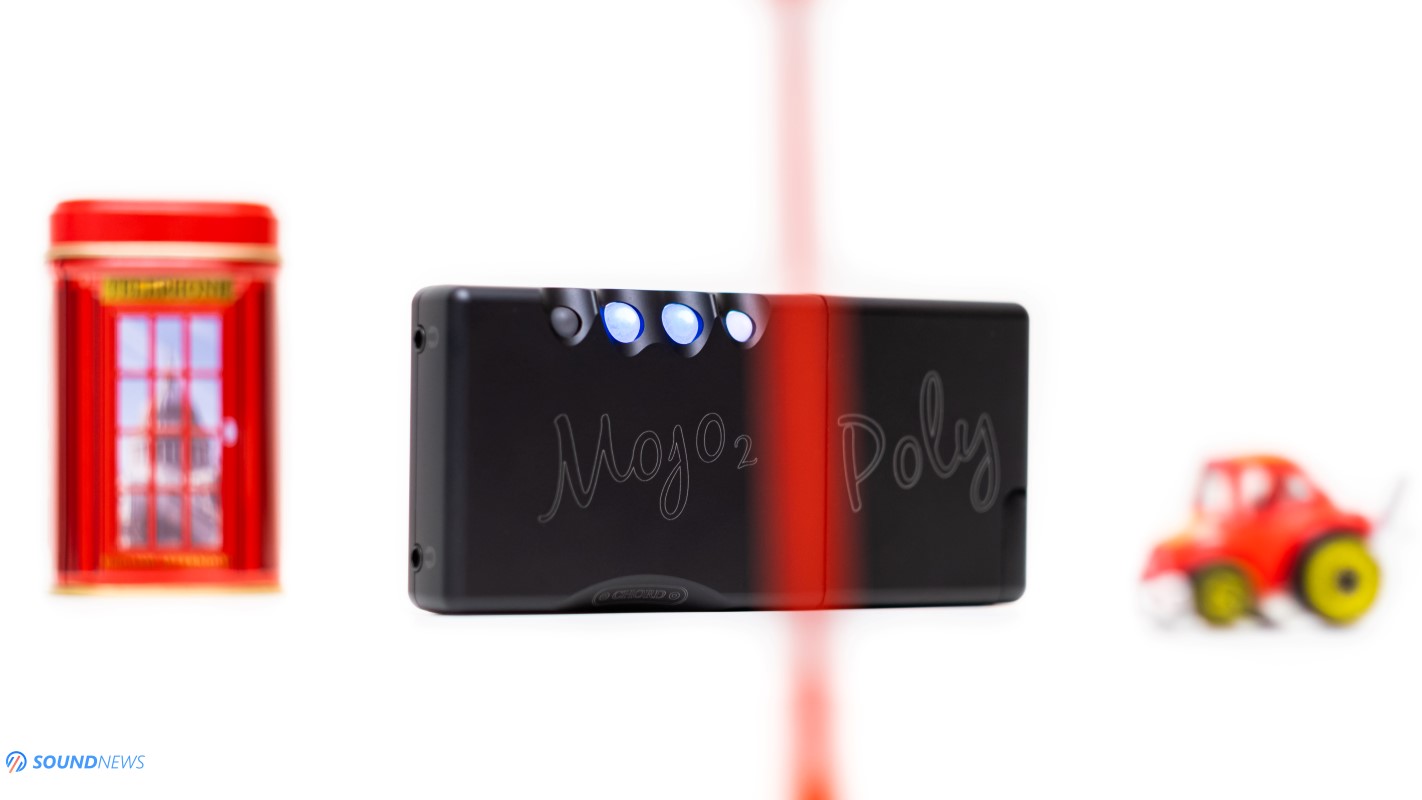
II. Power Output
While only 600mW are being provided in 30 Ohms and 90mW in 300 Ohms respectively, I’m reminding that these are only by a hair lower to Hugo2 power ratings and similar to the first gen Mojo. Its amp stage was crafted from discrete components, I took a small glimpse on its PCB board and I’ve spotted several diodes and small transistors and that made me happy, as with discrete components you can unleash your imagination as a designer and tune it to your liking, unlike op-amps that are limited by design. It will sound weird what I’m going to say, but not all Watts are made the same, isn’t that so Rob? Chord devices likes Mojo and Hugo deliver moderate voltages and a higher current output and that is precisely why they will be controlling the drivers of your headphones so well.
When Kennerton Rognir hopped on my head, Mojo2 mistook my eardrums as speed bags and on higher volumes my ears started flapping with Hifiman Sundara, a clear sign that the Force is strong with this one.
As you can imagine, portable over-ears, IEMs, portable and desktop dynamic headphones were nicely driven with plenty of volume remaining on tap. Transparency was to die for, detail retrieval felt up there with 4 figure converters, there was a good control of the drivers, bass notes were going deep, midrange felt full-bodied and trebles weren’t bothersome at all. I had most of the signs of well driven headphones.
Mojo2 didn’t slow its pace with planars and drove several of them, with the exception of Audeze LCD-4, Hifiman Susvara and to a lesser degree – Arya Stealth. With something like Sendy Peacock and Erzetich Phobos V2021, I’ve got plenty of authority in the bass, sweetness in the midrange and a harsh-free top octave. Dynamics were quite impressive, going up and down like a roller-coaster and the final result was quite an engaging and toe tapping experience.
However, it needs to be said that once you are approaching its upper power levels, it will start clipping, heavily distorting its bass output and massively shrinking the stage size. I’ve got clipping with LCD-4 and Susvara and Arya Stealth wasn’t as airy sounding as I like to, but the rest of the planar-mafia gang were far away from reaching its max volume setting.
Mojo2 was bravely sustaining longer bass notes on Limit to Your Love by James Blake (Qobuz / Tidal) and on Angel by Massive Attack (Qobuz / Tidal), ultimately providing a higher engagement factor to its twin brother.
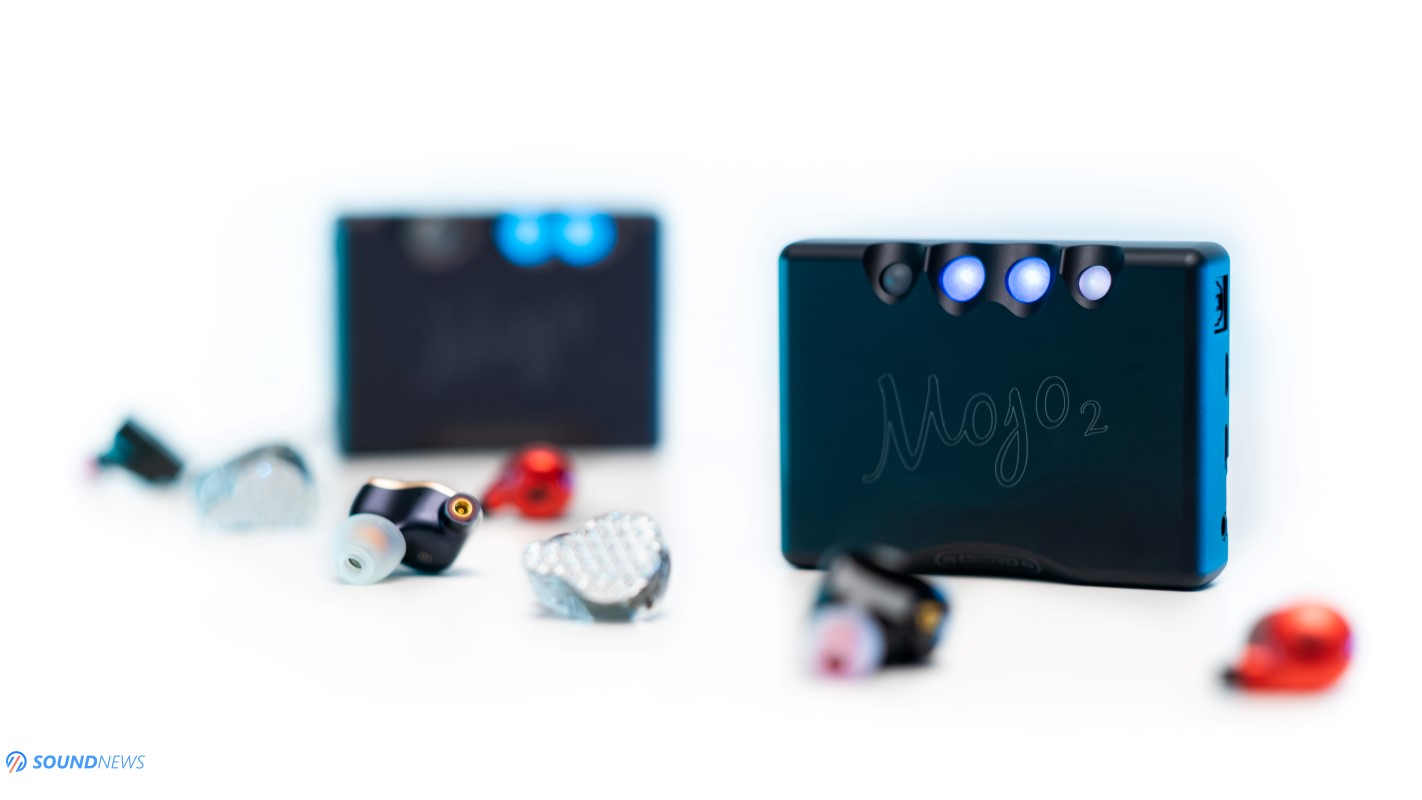
III. Noise Floor & IEM Pairings
Alright fellows, there are two important things to know about the Mojo2. The first one is when a smartphone stays on top, connected via a short cable, I’m no longer getting wireless interference, that I was getting from an early version of Mojo some years ago. I don’t know exactly if Chord Electronics solved that problem down the road, but Mojo2 no longer bears that burden on its metallic shoulders. I’ve put it near my Wi-Fi router and near O-core transformers and again…there’s no noise to be heard with sensitive IEMs attached to it and in this regard, I have nothing to complain.
Secondly, Mojo2’s noise floor sits on the same level with Mojo and if you use ultra-sensitive IEMs that have a higher sensitivity than 113 dB per a single mW of power, then those will be picking up a barely audible trace of white noise, as if it’s not there…but it’s there. I can hear it only with a pair of FiiO FA9 put in their high-sensitivity mode (turning their switch) and I can sense it only with my music on pause. When music starts playing, obviously I cannot detect anymore and I’m getting a pitch-black background.
Luckily, the rest of my IEMs aren’t as sensitive and I’m no longer picking up that noise, so be them Hiby Crystal6, FiiO FH9 or FH7, 7Hz Timeless or Moondrop Kato, I simply didn’t hear that low intensity noise anymore. This is probably the only part that wasn’t improved as much, as Mojo performs absolutely the same. Luckily, only a very small portion of IEMs are being affected by its noise floor (just one IEM in my case) and I don’t see it as a major drawback.
I’ve redid my tests while it’s being charged via a USB port of my PC and luckily noise floor wasn’t increasing a tiny bit. All in all, it still delivered a blacker background with musical notes appearing out of thin air and I could still walk around my tunes without being interrupted.

IV. Soundstage & Depth
Having a small footprint and tiny chassis, Chord couldn’t squeeze inside a powerful output stage and that can only mean a moderate stage size with desktop headphones. My open back headphones still sounded open…but I wasn’t mesmerized by the sheer scale of my music. Its similar power output didn’t make it bigger sounding and, in my case, it behaved exactly as its twin brother. I don’t see it as a con as you can’t possibly expect wonders from such a tiny device. You can certainly feel a precise location of the musical notes playing around you, but don’t expect an amazing depth or the widest left to right stage. It will sound clean, undistorted, fast and punchy, but it wouldn’t stretch its wings and fly as it happens with much bigger units. Rognir sounded more like a closed-back headphone (finally!) and LCD-4 was showing me little to no depth. However, easier tasks like Hifiman Sundara and Erzetich Phobos were still surrounding musical notes with air bubbles, offering a decent note separation and a perception that air is traveling around your head.
Long story short, Mojo2 is more or less the same to its twin brother in here, so expect a small to mid-sized soundstage, exactly the size of its chassis and if you’re craving for a lot more air in between the notes, you should search deeper into your pockets, as big sounding units aren’t exactly cheap, small and portable.
On the plus side, with IEMs, portable over-ears and several desktop headphones, I didn’t feel the stage crashing and pushing me closer to the musicians and if your earphones/headphones would be fully driven, then there’s still plenty of note separation.
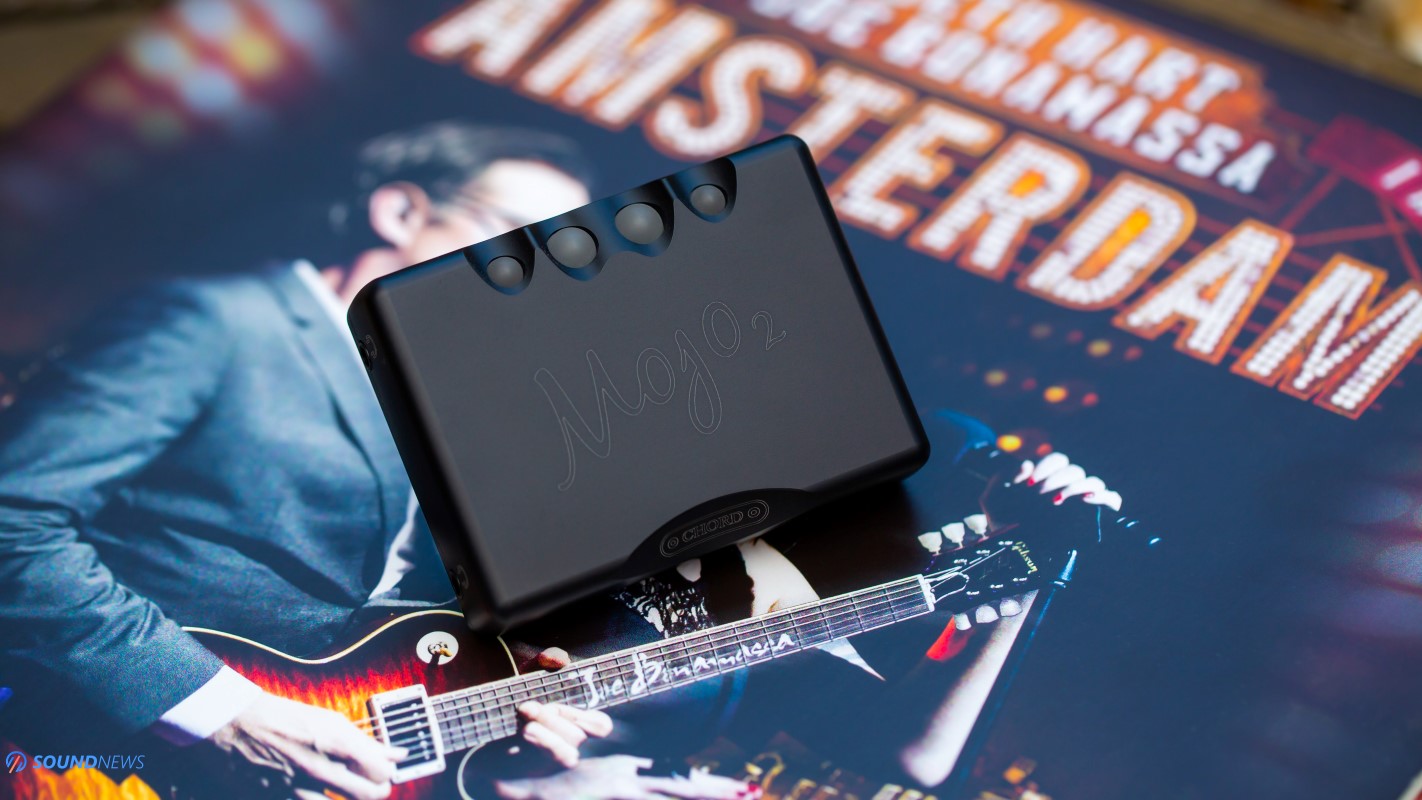
V. Resolution & Transparency
The Mojo2 has plenty of mojo in this department and will immediately impress with a higher focus on leading edges and textures. Micro-details are simply popping everywhere, shinning a light on subtleties and tiny nuances. The big surprise for me wasn’t its amazingly high detail-retrieval and top-notch transparency, but its relaxed and natural manner in delivering those details to me. It was more believable sounding to its twin brother and it always appeared more organic and easier going. After engaging some aggressive electronica and rock tunes, it wasn’t slowing down its pace and it wasn’t adding an aliasing filter on top, but all that came naturally towards me in a very non-aggressive way.
This is quite a change of pace to the first gen Mojo and even compared to Hugo2 and it reminds me by a hair about their higher tiered Hugo TT2. Music was simply flowing into my ears like a mountain spring, it was so refreshing and peaceful at the same time. I tried making it aggressive and raw around the edges, but no matter how hard I’ve tried, it still remained calm and relaxing sounding to me.
The change is bigger than expected and while its detail retrieval improved just a tiny bit, everything was flowing more naturally with their newest device and I needed mere seconds to figure that out. In the end, we’re getting a clearer and more transparent sound, while sounding more natural and easier going.

VI. Transient Response
There’s definitely a glitch in the Matrix while listening to music via Mojo2. It simply refuses to slow down no matter the track or headphones that are being attaching to it. Even going into clipping territory and giving its last breath with difficult loads as LCD-4, it was still refusing to slow down…not even a little. This thing is ridiculously fast sounding and the same can be said about decay of the notes. Everything happens instantly, there an absolute silence and then there’s music. There’s no bass and then there it is pounding your ear drums. It doesn’t make sense to me…how such a small unit is capable of impeccable transients like these? Another sign that we’ve living in the Matrix? Never mind, you got my point and you should expect an impeccable pace, rhythm and timing and this is really what defines the so-called Chord Electronics house sound. These fellows are crazy about dynamic swings!
Presumably your IEMs and headphones are fully driven by it, expect an unstoppable fury coming from its sub-bass, always pushing and pulling those membranes as ragdolls. The only negative effect is that there is no way you can work and listen to music via Mojo2, as it constantly grabs your attention and points its fingers toward different things. Hey, look at that bass note! How about that super-fast decay? Are you prepared for the sub-bass lines of Invisible Sun by The Prodigy (Qobuz / Tidal)? You better be, as Mojo 2 wouldn’t be merciful when it comes to dynamics.
Roses aren’t always red and violets aren’t eternally blue, as harder loads were still sounding fast, but I wasn’t getting a fearless bass impact, its upper power limits were being reached and naturally it couldn’t pound as hard nor sustain longer bass notes.
Nonetheless, this is still an incredible transient performance and it seems that Chord DNA still runs through its veins.

VII. Frequency Response
I’m reminding you that Mojo2 is equipped with tone controls, you can tune it to your liking, you can increase or decrease four ranges by up to 9 dB, all made by its powerful DSP. This is not your low-fi software EQ, but a considerably more advanced hardware DSP. Nonetheless, I feel that I need to describe it in its stock configuration, as I’ve used it mostly in this way.
A. Bass
We are talking about a nimble type of bass, that is clean, yet textured and heavy weight. It’s a Speedy Gonzales type of bass, I find it tightly controlled and punchy sounding at the same time. In case your headphones are fully driven, then you will experience a layered bass that never lacks oomph and cojones. It’s a highly detailed bass as well and if you’ll not be arriving at a higher volume position, then you’ll be safe and sound from distortions. You get both high-quality and high-quantity bass with easier loads and just a high-quality bass with heavier loads as nasty planar-magnetics. There were moments when I craved for a nicer bass slam, but with the right headphones, I’ve had all the bass energy I wished for. This is still a linear sounding unit, so expect bass notes only when those are called for, this isn’t a bass heavy unit, but you can certainly make it so.
B. Midrange
Remember when I was describing its detail retrieval and the way musical notes were coming towards the listener in a very natural way? Well, this is partially happening thanks to a nice midrange rendition. I can’t explain you why, but I’m really into ’60 and ’70 blues…I call them gangster blues™, as lead singers of that era had strong personalities, I found them charismatic, unrefined and blunt, but oh so engaging and powerful sounding. Junior Wells sounded even bolder on the newest Mojo, he was more guttural and ultimately more enjoyable. His live recordings are spontaneous, he always experiments and improvises even on choruses and I love that about him. Mojo2 was moving spotlights towards his voice and delivered exactly what I wanted to hear from a mid ‘60-ties blues album. There was more meat on the bone on double bass, more vibration in harmonica and ultimately more life in those songs. There is slightly more body and fullness compared to first gen Mojo and that makes me quite happy.
C. Treble
The interesting part about its treble output was not hearing it crystal clear and reaching top octaves like a climber reaching Mount Everest. The interesting part was hearing it non-aggressive and never ringing more to what I’m used to. If I’m hearing it easy going with a pair of Hifiman Sundara and Kennerton Rognir, which mind you are quite defined and expressive in here, then all my headphones should sound this way. Obviously, there are as many details as you can possibly desire, low intensity sounds are always popping here, there and everywhere like mushrooms after the rain. I’m into plenty of music genres, including treble intensive music as rock, but I just couldn’t make it aggressive sounding on any of my IEMs and headphones. It kept spreading its naturalness across my music like some sort of religion and you know what? I liked what it did to the upper treble and to the entirety of my music collection. With it, I can deal with harsh trebles and with Chi-Fi IEMs without breaking a sweat.
Overall, its frequency response felt complete top to bottom, there aren’t dips or rises and you won’t find roll-offs in here, just an extended frequency response at both ends of the spectrum.
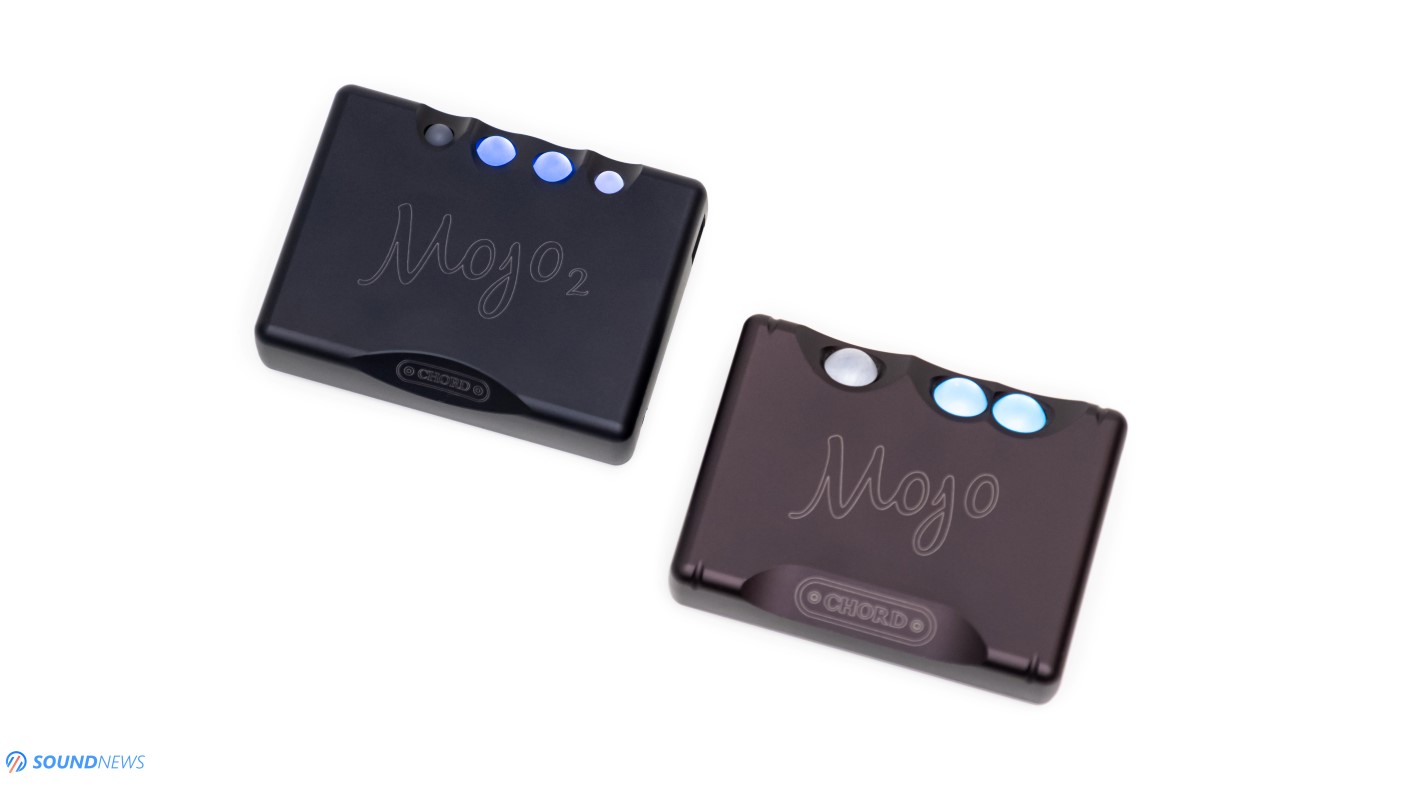
VIII. An Important Comparison
Chord Mojo 2 VS Chord Mojo
Besides having smaller buttons, an additional menu button and an extra digital input (USB Type-C), we are looking at two similar devices that carry a top-notch build quality and sublime sonics.
When it comes to features, this is where the newest Mojo plunges forward with plenty of quality of life improvements as: Intelligent Desktop Mode – which regulates charging to preserve its battery, Equalization adjustment (tone controls) – to suit a wider range of IEMs and headphones, Crossfeed – that will improve spatial effects for a more speaker-like experience and last but least a wireless interference filter so that external noises wouldn’t crawl inside its electronics.
Even without comparing them with headphones on my head, Mojo2 seems like a major step up in every possible way, improving its core specs and providing a complete freedom for the 21-century audiophile in you.
Sound wise, high impedance and low sensitivity headphones left a huge burden on both devices, but Mojo2 managed to provide a better listening experience. Mojo2 easier elevated dynamics, especially sub-bass region felt more playful to me. When it comes to sound signature, both are more alike than different, but Mojo2 was delivering a clearer signal, there was an increase in micro-details, I felt a better control of the diaphragm and a higher engagement factor. While its precursor was quite organic sounding, Mojo2 took that concept even further, as it added more flow, a sense of calm, it put more meat on the bone and removed all traces of digitus and listening fatigue. If you want a more musical sounding unit, then Mojo2 is that one.
Mojo2 also comes with a better pin point location of the notes and you can definitely feel that with open-back desktop headphones. Mojo2 wouldn’t hold them back as much, providing an excellent focus and imaging, while sounding similar in terms of soundstage.
When I’ve tried the first gen Mojo for the first time, I remember calling it impactful and speedy sounding, but with Mojo2 I’m getting a slight increase of transients, especially when drum kicks are landing on my eardrums. It kicks only by a hair harder and that happens anywhere in the frequency response. There’s more life in those bass notes and there’s a more visceral feeling with double drums.
There are two areas that weren’t improved, being more or less the same to me and that was power output and noise floor. There is a little bit of residual noise with both units when ultra-sensitive IEMs (113dB+ sensitivity) are coming to play, but that wasn’t a huge deal as there aren’t as many IEMs that carry such a high sensitivity. I’m hearing a low-level hum with both units, but it’s nowhere to be spotted with regular IEMs, portable or desktop headphones.
Long story short, no matter from what angle I’m looking at, Mojo2 feels like a major step up in terms of sonics, but especially when it comes to features and if you already own the time-tested Chord Mojo, maybe it’s the right time to upgrade to the next generation Mojo2, that hopefully will reach the same legendary status.
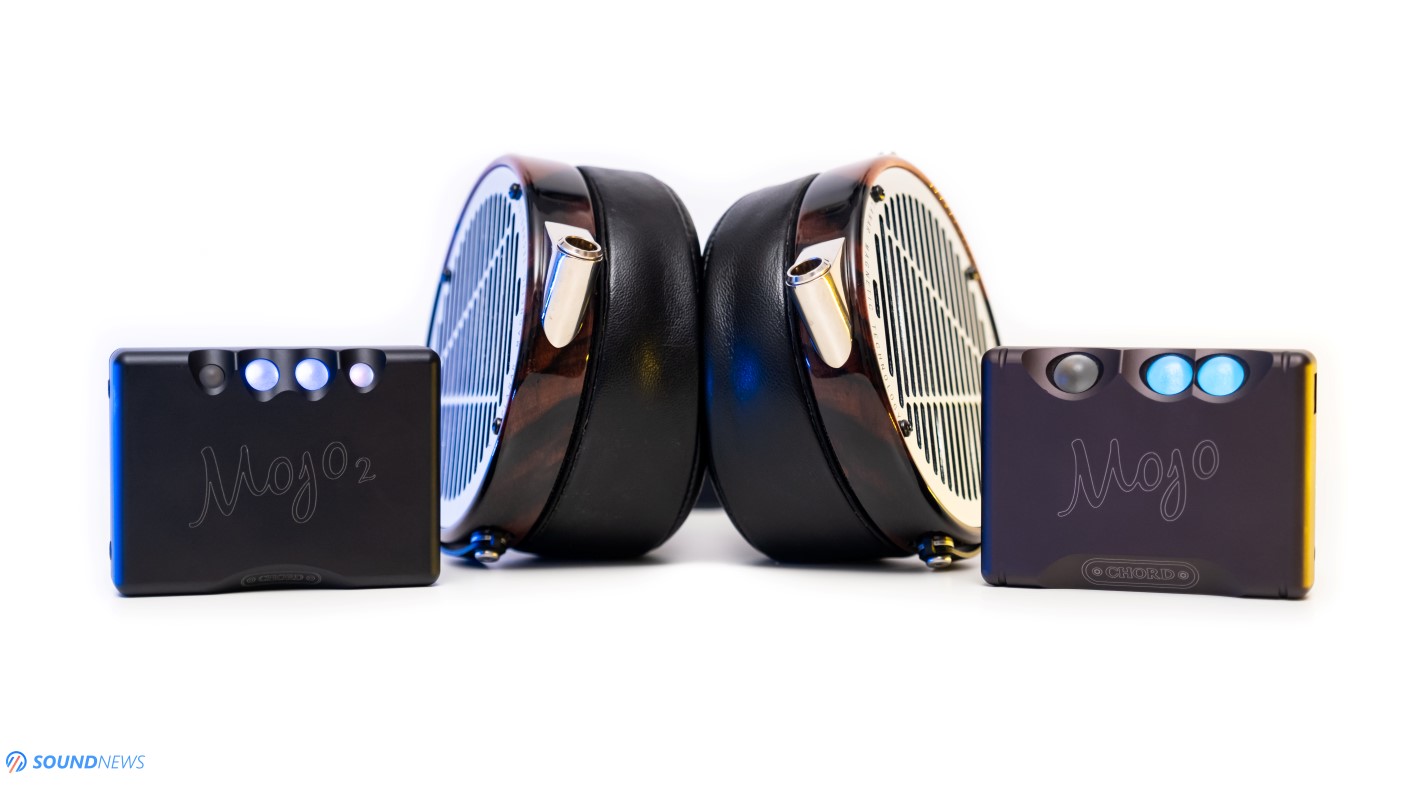
My Conclusion
Chord Electronics got their mojo right this time around and improved every single aspect that bothered me on its precursor. Its tone controls working on a hardware level did wonders with several headphones and counterbalanced plenty of issues I had with Chi-Fi IEMs.
Only time will tell if its battery would need a replacement every two years or so, but I hope that wouldn’t be the case with its Intelligent Desktop Mode at play, that should preserve a longer service life. Mojo2 sounded in such a way, that it overtook several chip-based DAC/Amp combos I was using in the past, as it added more life in several of my headphones and planted dynamics where there was none. The possibilities are almost endless when adding its dedicated streamer into equation, but I wish Chord would update Poly’s features list and let us play individual tracks stored on a microSD card, rather than playing a full playlist.
If you can’t stand huge DAPs and their slow loading times, then Mojo2 together with your smartphone can take their place and still deliver better sonics. Mojo2 use cases don’t stop here as it can replace well-regarded DAC/Amp combos and even DAC + headphone amplifier stacks without too much trouble.

Chord’s Mojo2 is so far one of the best all-in-one units we’ve tried at €600 and as such, it’s my pleasure awarding it with our highest Gold Award. Congratulations to the team and I’m looking forward to Watts coming next!
Mojo2 was kindly provided by Chord Electronics in partnership with their local distributor AVstore and it can be purchased from their dealers around the globe. In case you get one, please come back and leave some feedback below. I’m curious to know how it performs in your headphone or loudspeaker setup. That’s all folks, Sandu signing out!
PROS:
- Bomb proof build quality
- Tiny footprint, you can easily carry it to your office and back home
- Can work as a stationary or as a portable all-in-one unit
- Great I/O options, still works with Poly
- Feature packed to its teeth; those tone controls are adding plenty of value
- Highly detailed and transparent sounding
- Speedy and impactful at all times, impressive transients
- There’s enough power on tap, even with desktop headphones
- Sounds more organic and alive to its predecessor
- Impressive imagining and focus, provides a precise location of the notes
- An extended frequency response with no dips or rises
- Lacks listening fatigue
- Fully discrete output and amp stages
- A great value!
CONS:
- Moderately sized soundstage
- Distorts when upper power limits are being reached
- There’s some hiss with ultra-sensitive IEMs
- Accessing its features wasn’t a user-friendly experience
- Battery life isn’t that great
ASSOCIATED EQUIPMENT:
- DACs: Chord Electronics Mojo2, Mojo, Rockna Wavelight, Audiobyte HydraVox & HydraZap, Gold Note DS-10 Plus & PSU-10 Evo, SMSL VMV D2, SU-9N, Singxer SDA-6 PRO
- DAPs: FiiO M17, M11 Plus, Shanling M8, Hiby RS6
- Headphone Amps: Ferrum Audio OOR + Hypsos, Flux Lab Acoustics Volot, Benchmark HPA4, Burson Soloist 3X Grand Tourer, Musician Andromeda, Gustard H16, Soncoz SGA1 & others
- Preamps: Benchmark HPA4, Topping PRE90
- Power Amps: Benchmark AHB2 in bridged mode (x2), KECES S300
- Loudspeakers: KEF Reference 3, Natural Sound NS-17
- IEMs: FiiO FA9, FH9, FH7, FD7, 7Hz Timeless, Meze Rai Penta, Rai Solo, LittleDot Cu KIS, Hiby Crystal 6 & others
- Portable headphones: Meze 99 Classics, Sennheiser Momentum 2
- Full-sized headphones: Hifiman Susvara, HE1000SE, Arya Stealth, Sundara, Audeze LCD-5, LCD-4, Erzetich Phobos V2021, Erzetich Mania, Kennerton Rognir, Magni, Gjallarhorn, Vali, M12S, Sendy Audio Peacock & AIVA, Apos Caspian & others
- Interconnects: QED Reference (x2), Topping TCX1 (x2)
- Speaker cables: Kimber PR8, Audioquest Type4
- Power Cables: Isotek EVO3 Premier (x3)
- Balanced Isolation Power Conditioners: PLiXiR Elite BAC1500 (stereo setup), Elite BAC400 (headphone setup)
